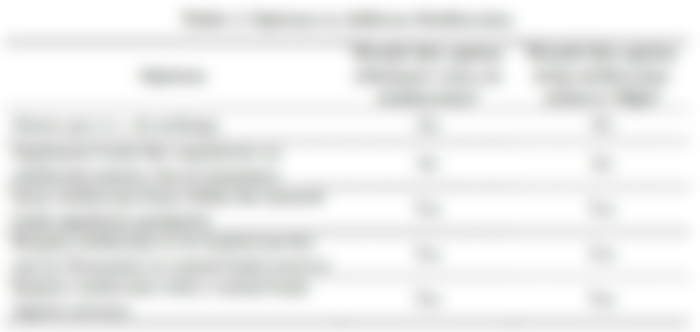
Rumors arise from various sources that stablecoins will soon be regulated and begin operating under a very strict regulatory framework.
Most stablecoins are lacking clarity since their inception while running under the centralized control of a parent company. Important to remember that all stablecoins besides DAI are centralized and under the control of their respective parent company.
USDT is run by Tether (same execs with Bitfinex) and USDC by Circle. We also see lately BUSD (Binance) rising and having reached a market cap above $10 billion.
USDC claims to be the only cryptocurrency audited by an independent, recognized, and global leading accounting network (Grant Thorton). However, we are awaiting official confirmation of this audit.
The stable coins have managed some serious growth during the last 12–18 months and should be considered as a serious force, or better as a serious threat to the whole cryptocurrency industry that is currently sitting at a $1.3 Trillion Market Cap.

Market Cap Doesn’t Matter!
Some analysts support the notion that market cap doesn’t matter, which in my opinion is a serious mistake. Market cap is not just derived from the last price or last trade. We are not talking about a low liquidity coin that has an 800% margin between sell and buy orders. These are liquid markets for most of the top coins in most of the top exchanges.
Even the small exchanges have liquidity today for most of their top cryptocurrencies. They wouldn’t survive otherwise.
And they have this liquidity in stablecoins, more particularly in Tether’s USDT.
Saying that market cap doesn’t matter is a mistake and could only be said about some very illiquade assets that are traded in exchanges dealing very low volumes.
Stablecoins Market Cap

Stablecoins have reached a total of $115B, while the crypto market cap is currently $1,3trillion. This amount is close to 10% of the whole market.
Tether is almost half of the stablecoin market and followed by USDC, BUSD, and DAI.

From March 2020 until today, stablecoins have gone a long way, rising about 1000% in market cap, by continuous issuance (minting) of new tokens on the selected blockchains they operate (Ethereum, Tron & BSC mostly).
BUSD especially has issued more than 10 billion tokens worth $1 each, in less than 12 months. Last August it just reached $200m and not even a year later is already close to $12 Billion!

The chart shows the extent of the rise of stable coins during the last year. Critics are still in disbelief that any of these stable coins are backed 1:1 as the companies that issue them suggest.
All stablecoins have witnessed exponential growth in issuance and are valuated today at $100 billion higher than a year ago.
We can now comprehend why the market cap is extremely important.

Latest (and constant) Threats to Tether USDT and Stablecoins
Regulations.
This is what everybody in this space is scared of. Stablecoins fear independent auditors. Auditors will find all irregularities and will have to sign the balance sheet of the company offering these securities.
In fact, for the case of Tether, there are no bets here. The irregularities and lack of transparency for more than five years have created fears over the overall long-term sustainability of USDT.
Regulatory News on Stablecoins This Week
July 14th: Jerome Powell: "You wouldn't need stablecoins is you had a U.S. digital currency" (Reuters)
The Federal Reserve is stepping up its research and public engagement on a digital version of the U.S. dollar
-FED Governor Lael Brainard
July 19th: Taming WildCat Stablecoins (SSRN)

NQA: No Questions Asked (The value of each unit is not questionable).
Quote from the paper (source):
Tether’s claims that its virtual currency was fully backed by U.S. dollars at all times was a lie.
These companies obscured the true risk investors faced and were operated by unlicensed and unregulated individuals and entities dealing in the darkest corners of the financial system.
July 20th: Yellen calls for Quick Action on Stablecoins (Bloomberg)
In light of the rapid growth in digital assets, it is important for the agencies to collaborate on the regulation of this sector and the development of any recommendations for new authorities.
-Janet Yellen
Moreover, lately, we've noticed popular financial figures advocating CBDCs (Central Bank Digital Currencies). Nouriel Roubini for example is a vivid critic of cryptocurrencies and an advocate of centralized money under the control of the FED.

Source: Twitter

Conclusion

The stablecoin that lacks any kind of transparent representation of the assets backing its tokens is USDT. There is no clear evidence that Tether has each USDT backed by an equal value of assets, and any reports given by Tether had been obscure and inadequate.
The $10Billion BUSD assets issued by Binance are equally ambiguous.
Binance has had its regulatory predicaments lately, being accused by many financial authorities, where it operates as a financial entity.
There is a clear strategy by all governments that will certainly become a new policy soon. On one hand, regulate and restrict stablecoins, and if there are any irregularities, then effectively ban them.
On the other hand promote a Central Bank Stablecoin, at a 1:1 price to the national fiat currency, under the FED control for the US, and ECB control for the EU.
There is a lot at stake with CBDCs, and governments will not be pleased with Tether when any dealings with China will emerge.
The Chinese CBDC is a threat to both the dollar and the euro as it will challenge the hegemony of both currencies. The DCEP network is considered a threat by the US and EU and countermeasures can only include the creation of a digital dollar and digital euro equivalent.
As with the case of the Chinese government, these fiat digital equivalents will also require to restrict private efforts of creating stablecoins and possibly the cryptocurrency markets in general.

BACKPAGE
Images:
Lead Image Source: Unsplash (by DrawKit Illustrations)
Last Image Source: WallpaperUP (modified)
References:
ASPI - China’s digital renminbi initiative is a network, not a currency
Bloomberg - Yellen calls for Quick Action on Stablecoins
SSRN - Taming WildCat Stablecoins (I can provide the pdf if you can't download).
Reuters - A Fed digital currency could undercut need for cryptocurrencies
More of my Articles on Tether and Stablecoins:

Active on:
● Read.Cash ● Noise.Cash ●Memo.Cash ●Medium ●Hive ● Steemit ●Vocal ● Minds
Shout-out to my Top Sponsors:
● @Cryptomax ● @TruSuccessXpert ●@btcfork














It was frustrating for me to find out that the USD wasn't able to be traded in Coinbase in my country. I was planning on using it to be able to transfer profits from BTC, ETH and BCH to keep the value when the dips happen - not possible! For the life of me, Africa makes everything so damn difficult. And on top of that I'm also very scared of being on the wrong side of the law - I don't want to find myself in a position using VPN etc. and then end up with a massive fine / potential jail time because I "did something wrong". Our government likes to prosecute the man in the street while letting the whales go unnoticed.